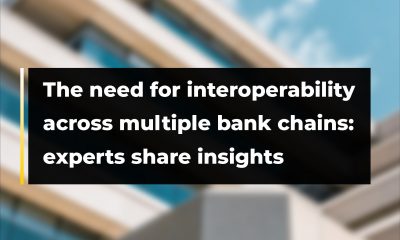FEATURED
How Axelar uses General Messaging Passing to improve blockchain interoperability

In a recent presentation at EthGlobal, Ben Weinberg, Developer Advocate at Axelar Network, gave a thorough overview of how Axelar is shaking up the idea of blockchain interoperability, with a special emphasis on General Message Passing (GMP). Let’s explore the key takeaways and advancements that hold the potential to revolutionize the world of blockchain.
Axelar is a blockchain that provides secure cross-chain communication and interoperability for Web3 applications.
It connects different blockchains, offering a “universal routing, translation, and security” system that enables users to interact with any asset or application on any chain with a single click.
Axelar is more than just a connector of blockchains; it is a programmable cross-chain layer that delivers full-stack interoperability. Its infrastructure empowers developers to compose freely using functions across any chain, and users to onboard with ease from any ecosystem.
In the context of Web3, interoperability is critical because it allows users to transfer assets or data across multiple platforms without restrictions or intermediaries.
General Message Passing (GMP) is a technology that goes beyond cross-chain bridges, revolutionizing blockchain application development and ushering in the Web3 era[5].
GMP empowers developers to build interchain-native applications that make cross-chain function calls and synchronize states in a way that is completely abstracted for the user.
This means that developers can compose applications that integrate functions hosted on various connected chains, allowing for greater flexibility and synergy.
Why improve interoperability
Ben emphasized the importance of enhanced interoperability within the expanding blockchain ecosystem. He pointed out that the rapid proliferation of new blockchains had made traditional bridges, relying on multi-sig contracts, vulnerable to attacks and security breaches.
When he embarked on his journey into Web3 back in 2017, he said, there were various projects competing to be the “Ethereum killers,” with the prevailing belief being that one blockchain would dominate while others faded away.
However, this narrative turned out to be inaccurate. Instead, the blockchain space witnessed the emergence of multiple blockchains coexisting and serving distinct purposes.
In light of this reality, there arose a need for these systems to communicate with each other, enabling developers to leverage the strengths of each chain when building applications. This is precisely why Axelar was created.
Axelar: Universal Web3 Interoperability:
Ben told the audience that Axelar employs a hub-and-spoke model, which significantly simplifies the process of connecting different blockchains.
Unlike the conventional bridges that require a bridge for every combination of blockchains, Axelar acts as the central hub through which all connections flow, offering scalability and efficiency.
He also mentioned that Axelar brings dual advantages to the design of interoperability tools – scalability and security. By acting as a blockchain itself with 75 live validators, it eliminates the need for traditional multi-sig contracts and offers an added layer of security to the interoperability process.
Moreover, its scalability is unique as it reduces the complexity of managing multiple pairwise bridges.
Furthermore, he said that Axelar uses General Message Passing (GMP). GMP enables the exchange of messages and calls between different blockchains seamlessly.
It goes beyond the simple transfer of tokens; it allows smart contracts and applications to interact with each other as if they were on the same blockchain.
Ben demonstrated a practical use case, showcasing how to send an ERC-20 token from the Avalanche blockchain to Polygon. This real-time example allowed the listeners to see the power of GMP in action.
Stats and projects
On a convincing note, the Developer Advocate mentioned the Squid Application, as one of the projects that utilizes the Axelar protocol. The Squid app allows users to choose both the token and the blockchain they wish to transact on, simplifying cross-chain interactions.
He added that in the past thirty days from the day of the presentation, over 66,000 transactions have been executed with a total transaction volume exceeding $3 billion.
Read also; How Lit Protocol brings security into Web3 with progammatic Signing

























1 Comment